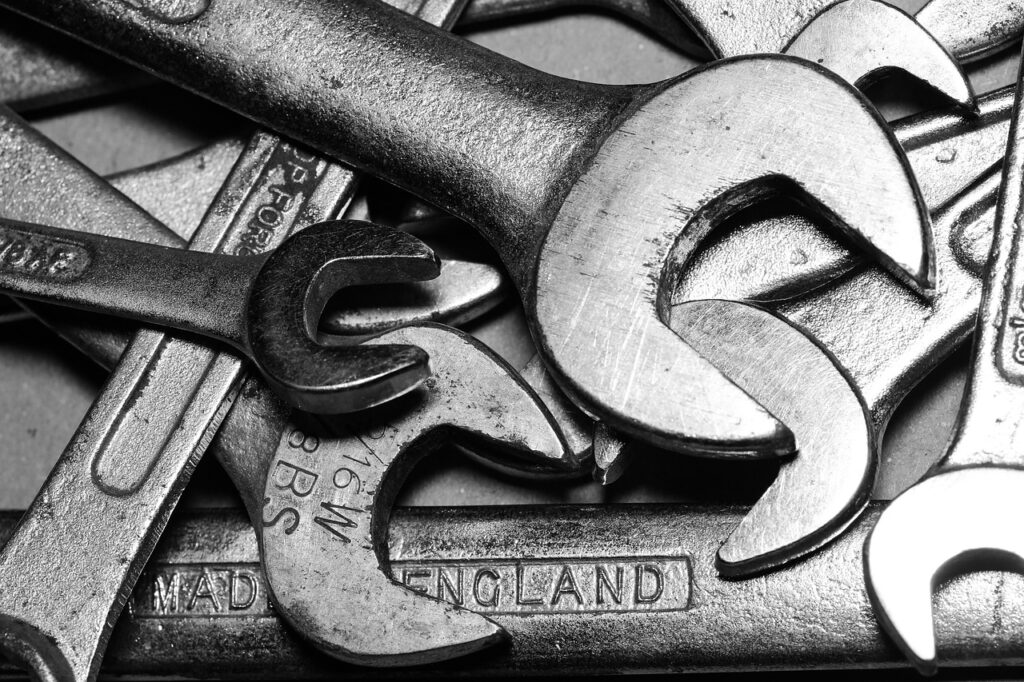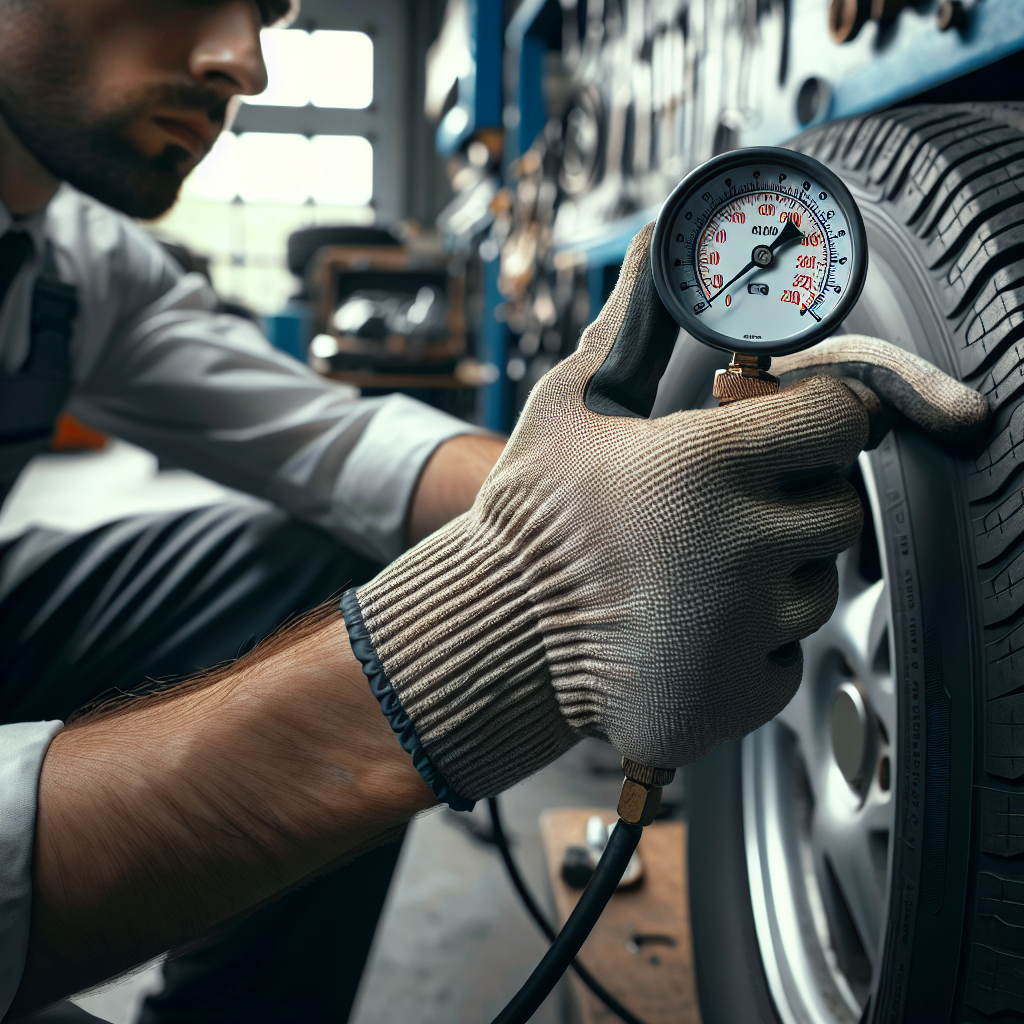Have you ever wondered if it’s possible to recalibrate your tire pressure monitoring system? The answer might surprise you! Tire pressure monitoring systems, commonly known as TPMS, are indeed able to be recalibrated. Whether you’ve recently changed your tires, installed aftermarket wheels, or are experiencing issues with your current TPMS, recalibrating it can help ensure accurate readings and maintain optimal tire performance. In this article, we’ll explore the process of recalibrating TPMS and provide you with helpful tips to keep your tires safe and reliable. So, sit back, relax, and let’s dive into the world of TPMS recalibration together!
Understanding Tire Pressure Monitoring Systems
Introduction to Tire Pressure Monitoring Systems
Tire Pressure Monitoring Systems (TPMS) are an essential feature in modern vehicles that help ensure the safety and performance of your tires. These systems are designed to monitor the air pressure in each tire and alert you if there is a significant deviation from the recommended pressure. By providing real-time information about your tire pressure, TPMS can help prevent dangerous situations on the road and save you from potential accidents.
Types of Tire Pressure Monitoring Systems
There are primarily two types of TPMS – direct and indirect systems. Direct TPMS uses sensors mounted on each tire’s valve stem or inside the tire to measure the air pressure and transmit the data to the vehicle’s onboard computer. Indirect TPMS, on the other hand, relies on the vehicle’s anti-lock braking system (ABS) to detect any inconsistencies in tire rotation speed, which can indicate changes in tire pressure.
Importance of Maintaining Proper Tire Pressure
Maintaining the correct tire pressure is crucial for several reasons. Firstly, properly inflated tires ensure optimal fuel efficiency, as underinflated tires can cause increased resistance and burn more fuel. Additionally, maintaining the recommended tire pressure promotes even tire wear, resulting in an extended tire lifespan and reduced maintenance costs. Moreover, properly inflated tires enhance your vehicle’s handling, stability, and braking performance, significantly improving overall safety on the road.
Recalibration of Tire Pressure Monitoring Systems
What Does Recalibration Mean?
Recalibration refers to the process of resetting and reconfiguring the TPMS to ensure it accurately measures and reports the tire pressure. Over time, the sensors in the TPMS may require recalibration due to factors such as wear and tear, temperature variations, or changes in tire size and type. Recalibration is essential to maintain the reliability and effectiveness of the TPMS, ensuring accurate tire pressure readings.
Determining Whether Recalibration is Possible
In some cases, TPMS sensors may be recalibrated, while in others, replacement may be necessary. Generally, sensors that have been damaged or reached the end of their lifespan will require replacement. However, if the sensors are still functioning correctly but require recalibration, it is possible to reset and reprogram them to ensure accurate readings.
When Recalibration is Required
Recalibration of TPMS may be required in various situations. Any time you replace your tires, it is essential to recalibrate the system to ensure it accurately measures the new tire pressure. Additionally, if you experience false TPMS warnings or notice significant discrepancies between the TPMS readings and the actual tire pressure, recalibration may be necessary. Anytime you suspect a TPMS malfunction, it is advisable to recalibrate the system to rule out any potential issues.
Recalibration Process
The recalibration process varies depending on the specific make and model of your vehicle. It typically involves accessing the TPMS settings through the vehicle’s onboard computer system and following the manufacturer’s instructions to initiate the recalibration sequence. The process may require a special tool or a series of specific actions, such as inflating or deflating the tires to the recommended pressure. It is crucial to consult your vehicle’s owner’s manual or seek professional guidance to ensure the proper recalibration procedure.
Professional Recalibration vs DIY Calibration
Recalibrating the TPMS can be done either by a professional technician or as a DIY project. Opting for professional recalibration offers several benefits, including expertise and specialized equipment. Professional technicians are trained to handle TPMS recalibration accurately and efficiently, ensuring precise results. Moreover, they have access to the latest software and diagnostic tools specifically designed for recalibrating TPMS. However, if you have some technical knowledge and the necessary tools, DIY recalibration is a viable option. It allows you to save on labor costs and gives you more control over the process, although it may require more time and effort on your part.

Professional Tire Pressure Monitoring System Recalibration
Benefits of Professional Recalibration
Professional recalibration offers several advantages over DIY recalibration. Firstly, technicians who specialize in TPMS recalibration have extensive knowledge and experience in working with various makes and models, guaranteeing accurate and reliable results. They can diagnose any underlying issues and ensure the TPMS is functioning optimally. Moreover, professional recalibration saves you time and effort, as trained technicians can complete the process quickly and efficiently. Lastly, professional recalibration provides peace of mind, knowing that experts have handled the task, minimizing the risk of errors or incorrect readings.
When to Seek Professional Help
While some vehicle owners may prefer DIY recalibration, there are circumstances when seeking professional help is highly recommended. If you are unsure of the recalibration process, lack the necessary tools, or have doubts about your technical abilities, consulting a qualified technician is a wise choice. Additionally, if you have encountered repeated TPMS malfunctions or are experiencing persistent false TPMS warnings, it is best to have the system examined by a professional to identify any underlying issues accurately.
Costs and Time Involved
The costs and time required for professional TPMS recalibration vary depending on factors such as the make and model of your vehicle and the location of the service provider. Typically, professional recalibration costs include labor charges, which can range from $50 to $100 or more. The process may take anywhere from 30 minutes to a few hours, depending on the complexity of the recalibration and any additional repairs or maintenance required.
Finding a Qualified Technician
Finding a qualified technician to recalibrate your TPMS is essential to ensure accurate and reliable results. Start by checking with your vehicle’s dealership or authorized service centers for recommendations. These establishments have trained technicians who are familiar with the specific make and model of your vehicle. Alternatively, you can seek recommendations from trusted friends, family, or online forums. Be sure to inquire about the technician’s experience and certifications to ensure they are qualified to handle TPMS recalibration.
DIY Tire Pressure Monitoring System Recalibration
Understanding TPMS Reset and Recalibration
DIY TPMS recalibration involves two main processes: reset and recalibration. Resetting the TPMS involves clearing any existing data or error codes in the system and returning it to its default settings. Recalibration, on the other hand, involves reconfiguring the TPMS to accurately measure and report the tire pressure. Resetting the TPMS is usually a necessary step before recalibration.
Tools and Equipment Needed
To perform DIY TPMS recalibration, you will need several tools and equipment. These include a TPMS sensor reset tool or an OBD-II scanner, an air compressor or tire inflator, and a tire pressure gauge. The TPMS sensor reset tool or OBD-II scanner is used to communicate with the TPMS system and initiate the reset and recalibration process. An air compressor or tire inflator is necessary to adjust the tire pressure to the recommended level, while a tire pressure gauge allows you to monitor and verify the tire pressure accurately.
Step-by-Step Recalibration Instructions
The specific steps for DIY TPMS recalibration may vary depending on your vehicle’s make and model. However, the general process involves the following steps:
- Park your vehicle on a level surface and engage the parking brake.
- Turn on the vehicle’s ignition without starting the engine.
- Locate the TPMS reset button, which may be located in the glove compartment, under the steering wheel, or in the center console.
- Press and hold the TPMS reset button until the TPMS warning light blinks twice or a beep sound is heard.
- Start deflating the first tire, using the air compressor or tire inflator, until the TPMS warning light blinks once.
- Repeat the deflation process for each tire in the specified sequence.
- After deflating all the tires, reinflate them to the recommended pressure using the air compressor or tire inflator.
- Once all tires are properly inflated, drive the vehicle for a short distance to allow the TPMS to recalibrate.
Precautions and Safety Measures
When performing DIY TPMS recalibration, it is important to take certain precautions to ensure safety and accuracy. Always refer to your vehicle’s owner’s manual for specific instructions and precautions related to TPMS recalibration. Use proper safety gear, such as gloves and safety glasses, when handling the tools or performing any maintenance on your tires. Additionally, follow the recommended tire inflation pressures provided by the vehicle manufacturer to avoid overinflating or underinflating the tires. Lastly, if you encounter any difficulties or doubts during the recalibration process, consult a qualified technician for assistance.

Common Issues and Troubleshooting
False TPMS Warnings
False TPMS warnings are a common issue that vehicle owners may experience. These warnings indicate a problem with the TPMS, but the actual tire pressure is within the recommended range. False warnings can be caused by various factors, such as electrical interference, sensor malfunctions, or improper TPMS calibration. If you consistently receive false TPMS warnings, it is essential to have the system inspected and recalibrated to resolve the issue.
Sensor Battery Replacement
TPMS sensors are powered by internal batteries, which may eventually require replacement. The average lifespan of TPMS sensor batteries is around 5 to 7 years. If you notice a significant decrease in sensor accuracy or frequent TPMS malfunctions, it may indicate a weak sensor battery. In such cases, consulting a qualified technician to replace the sensor batteries is recommended. Attempting to replace the batteries without proper knowledge or tools can cause damage to the TPMS sensors.
TPMS Malfunction
TPMS malfunctions can occur for various reasons, ranging from sensor failures to system errors. If you experience persistent TPMS malfunctions, such as continuous warnings or inaccurate readings, it is crucial to have the system diagnosed and repaired by a professional technician. They can identify the underlying cause of the malfunction and perform the necessary repairs or replacements to restore the TPMS functionality.
Dealing with Aftermarket Wheels and TPMS
If you have aftermarket wheels installed on your vehicle, it is important to consider their compatibility with the TPMS. Some aftermarket wheels may not have the necessary provisions for TPMS sensor installation or may interfere with the sensors’ functionality. In such cases, it is recommended to consult a professional technician or the wheel manufacturer to discuss the options for integrating TPMS sensors with your aftermarket wheels. They can provide guidance on the best solutions to ensure accurate TPMS readings and optimal performance.
Legal Considerations and Regulations
Regulations for TPMS Recalibration
TPMS recalibration is subject to certain regulations and requirements depending on the country or region. In many jurisdictions, it is mandatory for vehicles to have functional TPMS, and any recalibration or repairs must comply with the local regulations. It is crucial to be aware of the specific regulations governing TPMS recalibration in your area to ensure compliance and avoid any legal consequences.
Impact on Vehicle Inspections
Proper TPMS functionality is often a requirement for vehicle inspections, as it is considered a vital safety feature. Vehicles with malfunctioning TPMS may fail inspections or require immediate repairs before passing inspection. Therefore, maintaining a properly calibrated TPMS is not only essential for your safety but also to ensure a hassle-free vehicle inspection process.
Liability and Safety Concerns
Failure to maintain a properly calibrated TPMS can have serious liability and safety implications. Inaccurate tire pressure readings can lead to tire failures, reduced handling capabilities, and increased risks of accidents. In the event of an accident caused by improper tire pressure, liability may be attributed to the vehicle owner for failing to properly recalibrate the TPMS. By adhering to TPMS recalibration guidelines and regulations, you protect yourself and others on the road, minimizing the potential for accidents and legal complications.

Factors Affecting TPMS Calibration
Temperature and Altitude Variations
Temperature and altitude variations can significantly impact tire pressure, and consequently, TPMS calibration. As temperature changes, tire pressure typically fluctuates. For accurate TPMS readings, it is essential to recalibrate the system when significant temperature changes occur. Additionally, altitude variations can affect the tire pressure due to changes in atmospheric pressure. When driving in areas with varying altitudes, it is advisable to recalibrate the TPMS to ensure accurate readings.
Tire Type and Size
Different tire types and sizes require specific tire pressures for optimal performance and safety. When changing tire types or sizes, it is crucial to recalibrate the TPMS to ensure accurate readings based on the new tire’s recommended pressure range. Failing to recalibrate the system can result in inaccurate tire pressure measurements and compromise the vehicle’s safety and performance.
Sensor Installation and Mounting
Proper installation and mounting of TPMS sensors are vital for accurate calibration and functionality. If the sensors are not installed correctly or are improperly secured, it can lead to inaccurate tire pressure readings. It is crucial to follow the manufacturer’s instructions and guidelines when installing or replacing TPMS sensors to ensure their optimal performance and accurate calibration.
Driving Habits and Conditions
Driving habits and conditions can also affect TPMS calibration. Aggressive driving, such as excessive acceleration, braking, or cornering, can cause fluctuations in tire pressure due to increased heat generation. Similarly, driving on rough or uneven surfaces can cause temporary changes in tire pressure. It is important to recalibrate the TPMS periodically, especially if you frequently engage in aggressive driving or drive in challenging road conditions, to ensure accurate and reliable tire pressure readings.
Benefits of Maintaining Proper Tire Pressure
Improved Fuel Efficiency
Maintaining the proper tire pressure significantly contributes to improved fuel efficiency. Underinflated tires create more rolling resistance, increasing fuel consumption. By regularly recalibrating your TPMS and ensuring the tires are properly inflated, you can reduce fuel consumption, save money on fuel costs, and minimize your carbon footprint.
Enhanced Tire Performance
Properly inflated tires provide better traction, handling, and overall performance. Underinflated or overinflated tires can cause uneven wear, affecting the tire’s grip on the road and compromising your vehicle’s stability. By maintaining the recommended tire pressure through regular TPMS recalibration, you optimize the tire’s performance, ensuring a smooth and safe driving experience.
Increased Safety on the Road
Safety is perhaps the most critical benefit of maintaining proper tire pressure. Underinflated tires can lead to tire blowouts, reduced braking performance, and increased risks of accidents. Overinflated tires, on the other hand, have decreased contact with the road, resulting in reduced traction. By regularly recalibrating your TPMS and ensuring the tires are correctly inflated, you significantly enhance your vehicle’s safety on the road, minimizing the chances of tire-related accidents.

Frequency of TPMS Recalibration
Manufacturer Recommendations
Manufacturers typically provide guidelines regarding the frequency of TPMS recalibration. It is advisable to follow these recommendations to ensure optimal performance and reliability. Some manufacturers may suggest recalibrating the TPMS during routine vehicle maintenance, such as oil changes or tire rotations. However, it is essential to be aware of any specific factors that may necessitate more frequent recalibration, such as extreme temperature variations, significant changes in tire size or type, or driving conditions that may impact tire pressure.
Signs Indicating Recalibration is Needed
In addition to following manufacturer recommendations, there are certain signs that indicate recalibration may be necessary. If you receive frequent or persistent false TPMS warnings, notice significant variations between the TPMS readings and the actual tire pressure, or experience abnormal tire wear, it is advisable to recalibrate the TPMS. Anytime you suspect a TPMS malfunction, it is best to err on the side of caution and initiate recalibration to ensure accurate tire pressure measurements.
Routine Maintenance for Longevity
Regular TPMS recalibration should be included as part of your routine vehicle maintenance for long-lasting performance and reliability. Incorporate TPMS recalibration into your regular maintenance schedule, following the manufacturer’s recommendations and any specific requirements based on your driving habits and conditions. By proactively maintaining the TPMS, you ensure accurate tire pressure readings and maximize the lifespan and performance of your tires.
Conclusion
Understanding and maintaining proper tire pressure is crucial for your safety, fuel efficiency, and tire performance. Tire Pressure Monitoring Systems (TPMS) play a vital role in ensuring accurate tire pressure readings and providing timely warnings when deviations occur. Recalibrating the TPMS is essential to maintain its accuracy and effectiveness. Whether you choose professional recalibration or opt for a DIY approach, it is crucial to follow the recommended guidelines and consult qualified technicians or your vehicle’s manufacturer to ensure precise and reliable TPMS calibration. By prioritizing TPMS recalibration and adhering to maintenance schedules, you enhance your vehicle’s safety, optimize fuel efficiency, and prolong the lifespan of your tires, offering peace of mind and a smoother driving experience.


